An Interview With Aishwarya Sridhar
What To Expect From This Interview:
Aishwarya Sridhar is a National Geographic Explorer, wildlife filmmaker, award-winning photographer, presenter, and passionate conservationist. I first met Aishwarya during my time at National Geographic and have since come to admire her not only as a trailblazing talent but also as a friend.
I came across Aishwarya when we acquired her groundbreaking film “Queen of Taru” for National Geographic’s Big Cat Week. In a male-dominated field like wildlife filmmaking, it was both surprising and inspiring to learn that the film’s director was a 22-year-old woman.
Recognizing her talent, I introduced her to Nat Geo’s storytelling teams to help support her growth. Since then, I’ve followed her journey closely—especially during my travels to India—watching as she has confidently evolve into one of India’s premier wildlife storytellers. Her latest documentary, “Leopard Dynasty: Rise of Rana,” is a powerful example of her mastery in wildlife storytelling and how Indian wildlife stories are so important to her.
In this interview, we dive into what fuels Aishwarya’s passion for wildlife, the making of her latest film, and the advice she offers to emerging wildlife filmmakers. At just 28, she continues to push boundaries, telling vital conservation stories and setting bold goals for the future.
Follow her on Instagram at @chikoo_wild. Aishwarya Sridhar is not just a wildlife expert—she’s a true inspiration.
Aishwarya in the field
Aishwarya I’ve just seen a preview of your latest film “Leopard Dynasty: Rise of Rana” which is a beautiful piece of wildlife storytelling of one of India’s iconic Big Cats. Can you tell me how the story of Rana came to you, how long it took to make & what it means to you?
The story of Leopard Dynasty: Rise of Rana came to me in a rather serendipitous way. I had just completed a film on lions and was contemplating the next step in what I always envisioned as a trilogy on India’s three iconic big cats — the lion, the leopard, and the tiger. Leopard had always intrigued me. They’re elusive, secretive, and often overshadowed by their more flamboyant cousins, but I’ve long felt that their stories, especially in the Indian landscape, have remained largely untold in depth and character.
One day, while scrolling through Facebook, I came across a post by a friend about a bold leopard named Rana in Jhalana. The name stuck with me. There was something about the way he was described — confident, fearless, charismatic. I decided to visit Jhalana on a recce, mostly out of curiosity. That first encounter with Rana changed everything. I saw him saunter through the forest like he owned it, completely unbothered by the vehicles or people around him. In all my years of filming wildlife, I had never seen a leopard carry himself so boldly. He was regal, magnetic — and I instantly knew I had found my protagonist.
It took me a year and a half to shoot the film. That time was spent closely tracking Rana’s transformation — from a naive sub-adult who had just lost his mother, to an ambitious, power-hungry prince challenging his own father for dominance. His journey is Shakespearean in many ways, filled with ambition, conflict, vulnerability, and moments of triumph. Watching him grow and evolve was not just fascinating from a wildlife perspective, but deeply moving as a storyteller.
What makes Leopard Dynasty: Rise of Rana particularly special to me is the creative direction we took. I made a conscious decision to step away from the traditional bold of natural history documentaries, which often lean heavily on Western styles of storytelling. Instead, I wanted this film to feel deeply Indian — not just in subject, but in soul. From the music, which draws from Indian classical and folk traditions, to the editing style and the narration, every element was designed to evoke the richness and rhythm of Indian storytelling. We didn’t just document Rana’s life — we told his story like an epic, like the leopards of Jhalana were the royal families of an ancient kingdom.
The film is about legacy, power, survival, and the invisible threads that connect the wild with our own human dramas. Rana’s story reminded me that in the animal kingdom, just as in our own lives, greatness is always hard-earned.
Portrait of leopard Rana
Our paths crossed six years ago when I was working at National Geographic & I acquired the first film you were involved with as a Director/ cinematographer- “Queen of Taru”. You were just 22. Can you tell me how you got your first start & what inspired your passion for wildlife?
I’ll always be grateful to you for giving me my first big break by acquiring Queen of Taru when I was just 22. At the time, I had just finished college and was still trying to figure out my career path. I didn’t officially start working professionally in this field until I turned 25, but my passion for wildlife was deeply rooted long before that.
I grew up in the foothills of Matheran, a lush, biodiverse region in India — home to over 7–8% of the world’s recorded species. My earliest memories are of playing in green forests, watching fireflies from my balcony as my grandmother told me stories under the stars. But as I grew older, the forests gave way to highways, mangroves were cleared for industry, and the fireflies disappeared. That loss ignited something in me. By the time I was 13, I felt an urge to do something — to protect what I loved.
Then I discovered wildlife documentaries. I remember watching Life with Sir David Attenborough and being utterly captivated. It hit me: if a TV show could make me fall in love with Komodo dragons from my living room in India, maybe I could use a camera to make others fall in love with the wildlife around me — and inspire them to protect it.
That thought stayed with me. I started out as a hobbyist photographer, capturing stills of wildlife, telling visual stories about the environment and local communities protecting it. I never actively planned to be a filmmaker — the story of Maya, the tigress from Tadoba, found me. I had been visiting Tadoba regularly from 2012 to 2018, starting right after my IGCSE board exams. I saw Maya for the first time as a sub-adult. One day, she stood her ground against a gaur while her siblings fled — in that moment, I knew she was special.
Years later, I learned of her incredible act of bringing back her former mate to drive out a rival male who had taken over her territory and separated her from her cubs. She used false mating to deceive and survive — it was pure instinct, resilience, and intelligence. It felt like a Bollywood script playing out in the wild. That’s when I knew her story had to be told.
I compiled years of footage — mine and contributions from friends — and Queen of Taru was born. That film didn’t just launch my career; it affirmed my belief that storytelling can be a powerful tool for conservation. And it all began with a spark from childhood — a balcony full of fireflies and a desire to bring nature’s magic back to our world.
Tigress Maya with her three cubs
In the wildlife genre where female filmmakers are vastly underrepresented, what have been the main challenges & how have you overcome them?
One of the biggest challenges I’ve faced in wildlife filmmaking has been earning credibility—not just as a filmmaker, but as a young woman leading projects in a space that’s still very male-dominated, especially in India. Wildlife filmmaking isn’t just creatively demanding—it also involves physically strenuous, outdoor fieldwork in remote locations, and coordinating with technical crews who are often more experienced and older.
From the start, I encountered sexism and gender bias. There were moments when my creative input was dismissed, or when male crew members refused to take direction simply because I was a woman in charge. I remember trying to hire a drone camera operator early in my career who clearly had trouble accepting a woman giving instructions—it led to ego clashes that had nothing to do with the work itself. These attitudes weren’t always direct, but subtle: underestimating my knowledge, questioning my decisions, or second-guessing my leadership.
Another challenge was simply being taken seriously at a young age. People often assumed I was “just experimenting” or didn’t have the professional capacity to lead a large-scale production. It was frustrating, but it also fuelled me to work twice as hard, prove myself through results, and let my work speak louder than assumptions.
On the business side, setting up Bambee Studios Private Limited came with its own hurdles. Balancing creativity with operations, hiring the right team, building industry connections, and securing clients—all of it took time and relentless persistence. But I came into it with a solid understanding of business, having majored in Business and Accounting during my Cambridge A Levels. That academic background helped me navigate budgeting, complex co-production contracts, negotiations, and long-term planning with confidence.
To overcome the challenges I let my work speak. I focused on consistently delivering high-quality work. Results earned me respect over time—more than words ever could. I also stood my ground. I learned to be assertive, without apologizing for being a woman in charge. Setting clear boundaries and expectations helped resolve power dynamics early on. It’s also important to work with the Right People: I now work with collaborators who value professionalism. That shift in team dynamics has made a huge difference. I just love my team!
In hindsight, the challenges weren’t just roadblocks—they were lessons. They taught me to lead with confidence, stay resilient in the face of bias, and build a career not by fitting into the system, but by changing it from within.
Indian Leopard portrait
What advice would you give, particularly to young women, looking to start a career in wildlife filmmaking or photography?
My biggest advice to young women — and really anyone — who want to step into wildlife filmmaking or photography is: ‘’don’t let gender limit your dreams…don’t wait for permission or the “perfect” moment to start. Just begin. Whether it’s with a DSLR, a phone camera, or even just writing ideas down — start telling the stories that move you.
This field can often feel intimidating, especially for women. It’s rugged, unpredictable, and still male-dominated in many parts of the world. But that’s exactly why we need more women’s voices — to bring fresh perspectives, empathy, and new dimensions to the way we see and tell stories about the natural world.
Be curious, stay persistent, and don’t be afraid of failure — every great wildlife story comes with long stretches of waiting, uncertainty, and setbacks. Embrace that process. Also, build your own community — connect with other creators, conservationists, and storytellers. Support systems matter deeply in this line of work.
And lastly, don’t underestimate the power of your unique lived experience. Your background, your culture, your voice — they bring something the world hasn’t seen yet. Wildlife storytelling isn’t just about animals; it’s about connection. And the world needs storytellers who can connect people to nature with authenticity and purpose.
So trust your instincts, believe that your stories are worth telling — and go for it.
Aishwarya looking at her wildlife footage
Since making your first film, doors have been opened to you including becoming an Emerging Fellow at the ILCP & becoming a National Geographic Explorer. Can you tell how much these incredible accolades have meant to you & how have they helped your career?
Both becoming an Emerging Fellow at the International League of Conservation Photographers (iLCP) and a National Geographic Explorer have been incredibly humbling and transformative milestones in my career. These recognitions not only validated my work but also gave me a sense of belonging in a global community of storytellers and conservationists whom I’ve long admired.
The iLCP fellowship, in particular, connected me with a network of powerful visual storytellers from around the world — people using imagery as a force for conservation and change. Being part of that community taught me the value of collaboration, ethics in storytelling, and the responsibility we carry when documenting fragile ecosystems and vulnerable species. It’s not just about the perfect shot — it’s about impact, integrity, and purpose.
Becoming a National Geographic Explorer has been a dream of mine since I was a teenager watching their documentaries. That title has opened up new opportunities and resources. It has given me a platform to pitch ambitious ideas, access support for fieldwork, and tell stories on a scale I never imagined possible. The incredible Explorer community has been a huge source of inspiration — a reminder that we’re all working toward a shared goal: to protect the planet through powerful storytelling.
Both honors have helped me not only grow as a filmmaker but also evolve as a communicator and conservation advocate. They’ve helped me believe that someone like me — a young woman from India, who grew up chasing fireflies in her backyard — can stand on global stages and tell stories that matter.
Bengal Tiger cools off in water
Over your career you have moved between photography & cinematography. How do you adapt your eye & storytelling between these two disciplines?
Shifting between photography and cinematography has been one of the most creatively rewarding — and humbling — aspects of my journey. While both are visual storytelling tools, the mindset, discipline, and even the physicality of shooting are very different. In fact, I had to unlearn quite a bit when transitioning from stills to motion.
As a photographer, you're constantly moving — chasing light, changing angles, reacting in real-time to frame that perfect moment. But in cinematography, especially when filming wildlife, you often have to stay incredibly still. Even the slightest movement — like shifting in your seat or adjusting the lens — can shake the gypsy or tripod and ruin a perfectly good shot. Patience and precision became crucial. I had to retrain myself to slow down, anticipate movement, and let the action unfold within the frame rather than chasing it.
One of the biggest learning curves was sound. In photography, you’re only thinking visually. But in filmmaking, sound is half the experience. I had to understand how to capture ambient sounds — the rustling of leaves, alarm calls, the distant call of a peacock — all of which give the audience a real, immersive sense of place. Good sound design can elevate a scene from something beautiful to something unforgettable. Learning how to record clean field audio, reduce handling noise, and work with natural soundscapes was a whole new skillset I had to develop.
Cinematography also taught me about rhythm and time. A photograph captures a moment — a frame. But film captures behavior, emotion, progression. You’re building sequences, crafting arcs, using light, sound, and pacing to tell a story that unfolds over minutes, not milliseconds. It requires a different kind of storytelling awareness — one rooted in patience, observation, and emotional resonance.
That said, my foundation in photography helped immensely. It taught me to see — to compose, to understand light, texture, and movement. But filmmaking challenged me to listen, to wait, and to think in stories, not just images. Moving between the two disciplines keeps me creatively grounded, and allows me to tell richer, more layered stories of the wild.
Porrait of Bonnet Macaque
Your company called Bambee Studios which I believe you set up with other Natural History filmmakers wants to “tell stories that make a difference”. So, what’s next & what are you most excited before
My company, Bambee Studios Private Limited, was born out of a simple but powerful belief — that wildlife films can do more than just inform or entertain; they can drive change. We’re a team of passionate natural history filmmakers dedicated to creating impact-driven documentaries and clutter-breaking wildlife stories that resonate deeply with audiences.
At Bambee, our mission is not just to document the natural world, but to tell emotionally powerful stories that spark awareness, inspire action, and connect people with nature in meaningful ways. We operate at the intersection of cinematic storytelling and conservation messaging, bringing to screens untold stories from the wild — whether it’s about endangered species, fragile ecosystems, human-wildlife conflict, climate change, or the unsung efforts of local communities working to protect biodiversity.
What truly sets us apart is our narrative-first approach. We don’t just film animals — we build stories around them, often with character arcs, emotional depth, and visual aesthetics that feel more like a feature film than a traditional wildlife documentary. Whether it’s a short-form piece or a long-format series, we’re always asking: How can this story move people? Because when stories move people, they remember — and they care.
Looking ahead, I’m incredibly excited about our upcoming slate of projects. While I can’t reveal too much just yet, we’re working on a mix of feature documentaries and series that will really push the boundaries of natural history storytelling — both in form and content. These are projects rooted in the wild but elevated by human emotion, visual innovation, and a strong purpose.
Ultimately, Bambee Studios is more than just a production house. It’s a platform for purposeful storytelling that puts nature and Planet Earth at the center — reminding us all of what we stand to lose, and why it’s worth fighting for.
Art for Leopard Dynasty: Rise of Rana
So you are not even 30 yet, do you have goals in mind for the next few years, or do you take it step by step?
It’s a bit of both, honestly. I do have certain goals in mind — stories I want to tell, places I dream of filming in, and voices I want to amplify through my work. I’d love to continue building Bambee Studios into a global platform for impactful, character-driven natural history storytelling that resonates across cultures and languages. I’m especially passionate about bringing more South Asian stories to the forefront, told through local perspectives and rooted in our own ways of storytelling.
At the same time, I’ve learned that in this field, you also have to stay open — to let stories find you, to adapt, and to grow with each experience. Some of the most defining moments in my career happened because I followed a hunch or took a chance on something unplanned.
So yes, I have a vision for the next few years — but I try not to get too rigid with timelines. My focus is on staying authentic to the kind of stories I want to tell, continuing to evolve as a filmmaker, and always keeping the heart of it — nature, emotion, and impact — at the centre.
I’m very excited about what comes next for you & also doing a safari with you next. That’s one of my goals for next year!
Yes!! That’s one of my goals too! Looking forward to taking you into the heart of wild India! Can’t wait!
Thank you for being a Wildlife Expert on my guest blog!
If you want to know more about my experience of working at National Geographic check out my latest photo story and if you are interested in my latest quest to photograph Bengal Tigers click on this link.
Thank you for taking the time to read this interview with Aishwarya.
Jules
Collections
A series of photographic work, exploring wildlife from around the world. View the full collection here.
Available Prints
My top prints are available to purchase as limited edition runs of only 25 and 15 between 30” and 60” prints. View a selection below or the full collection here.

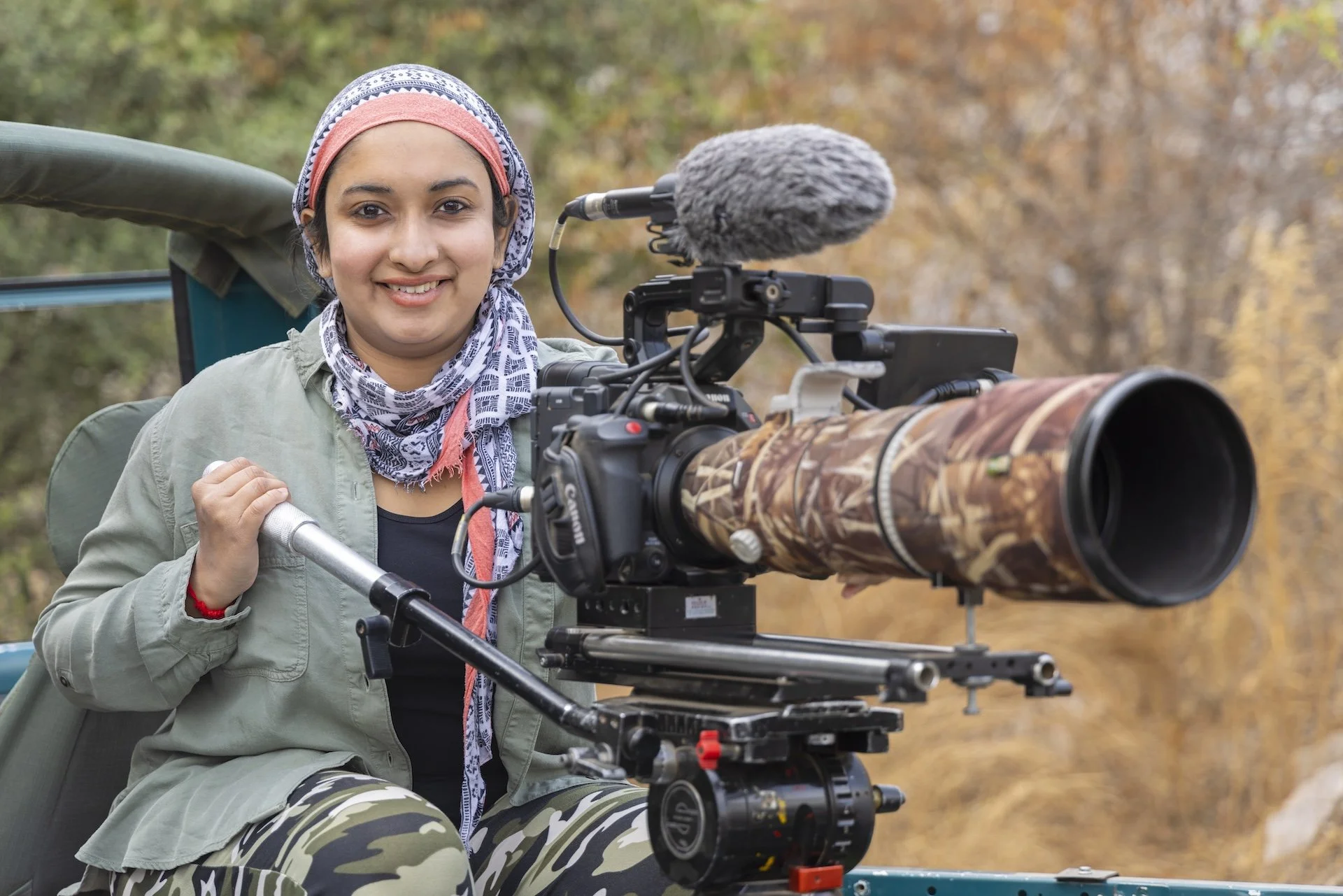
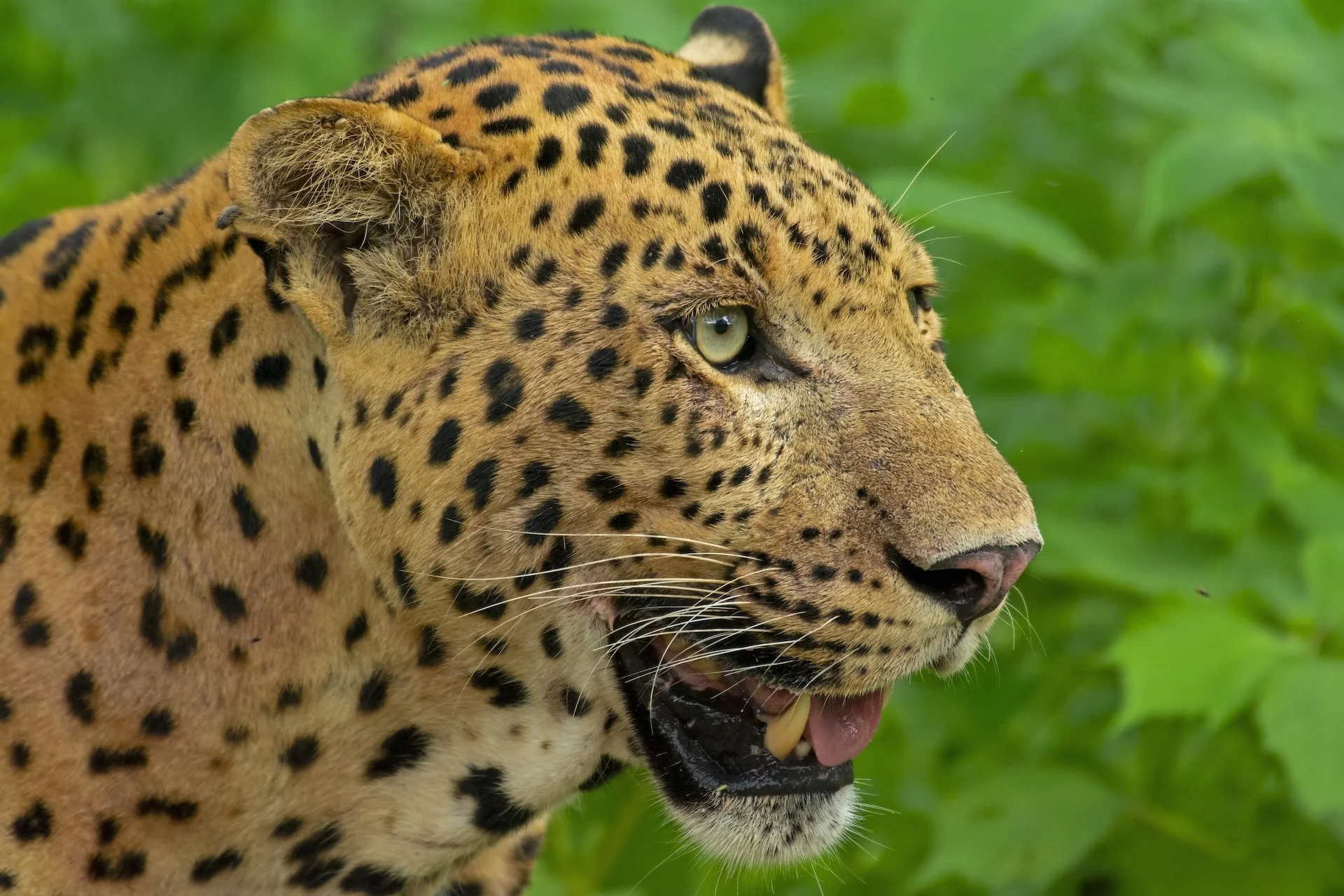
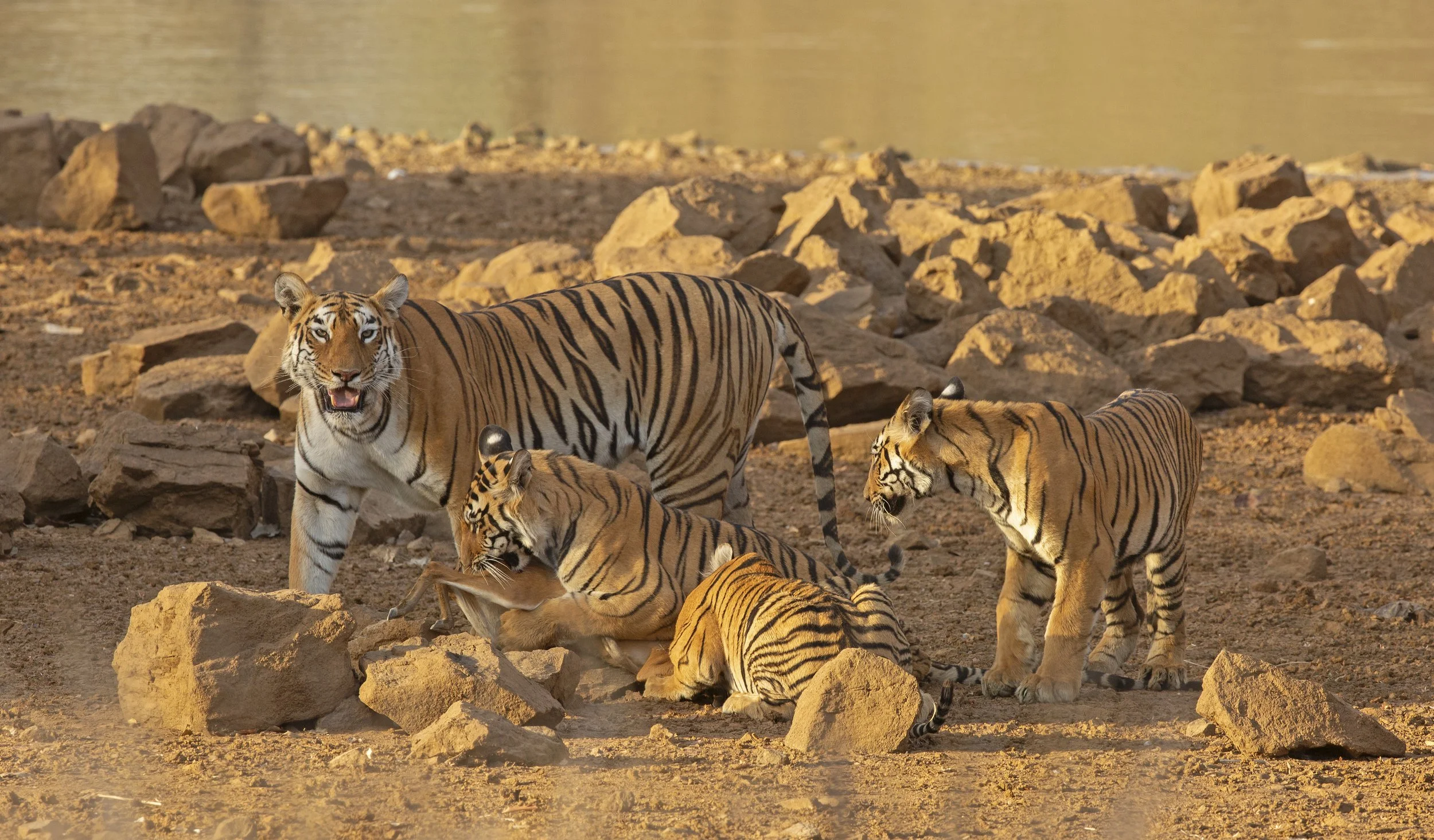
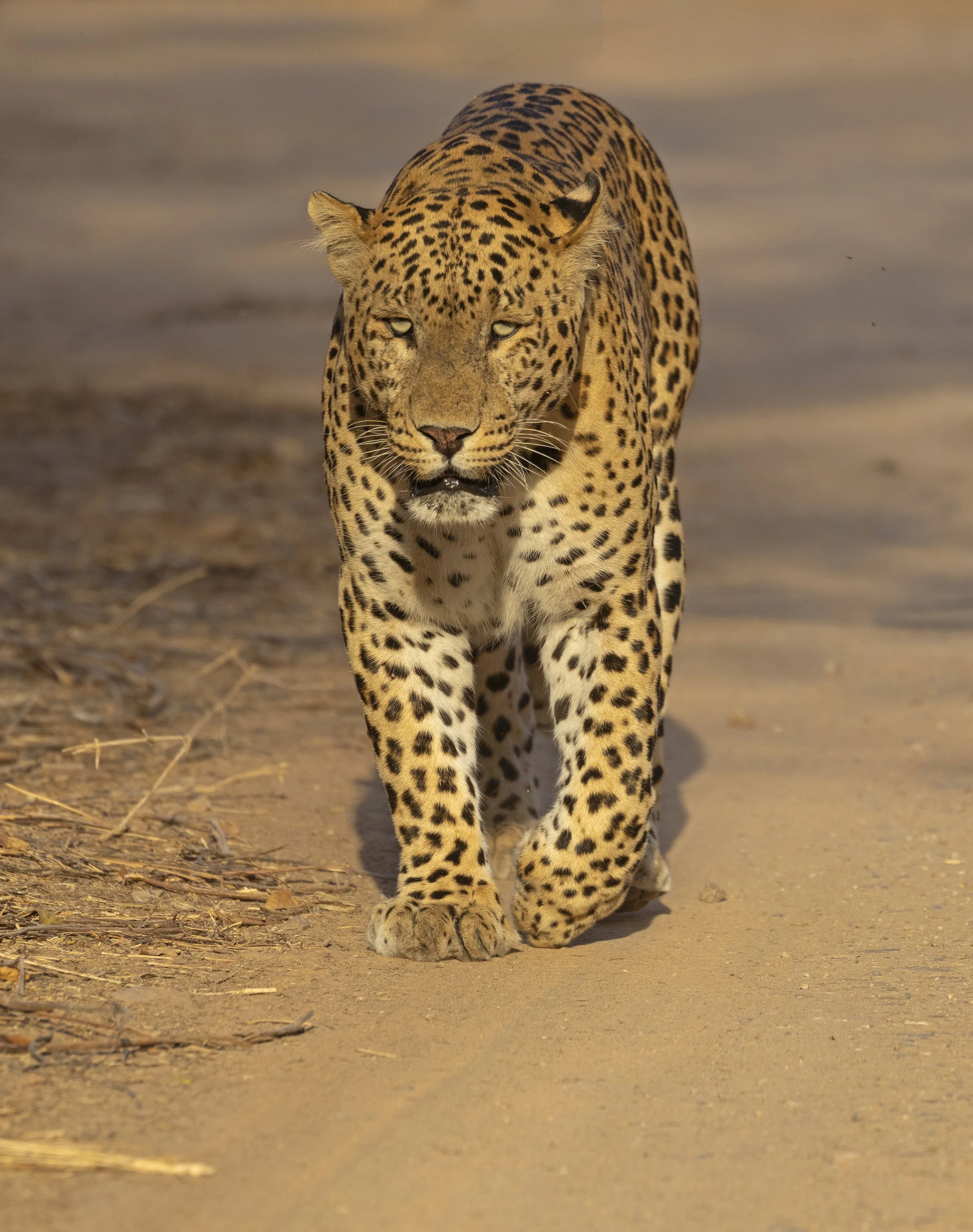

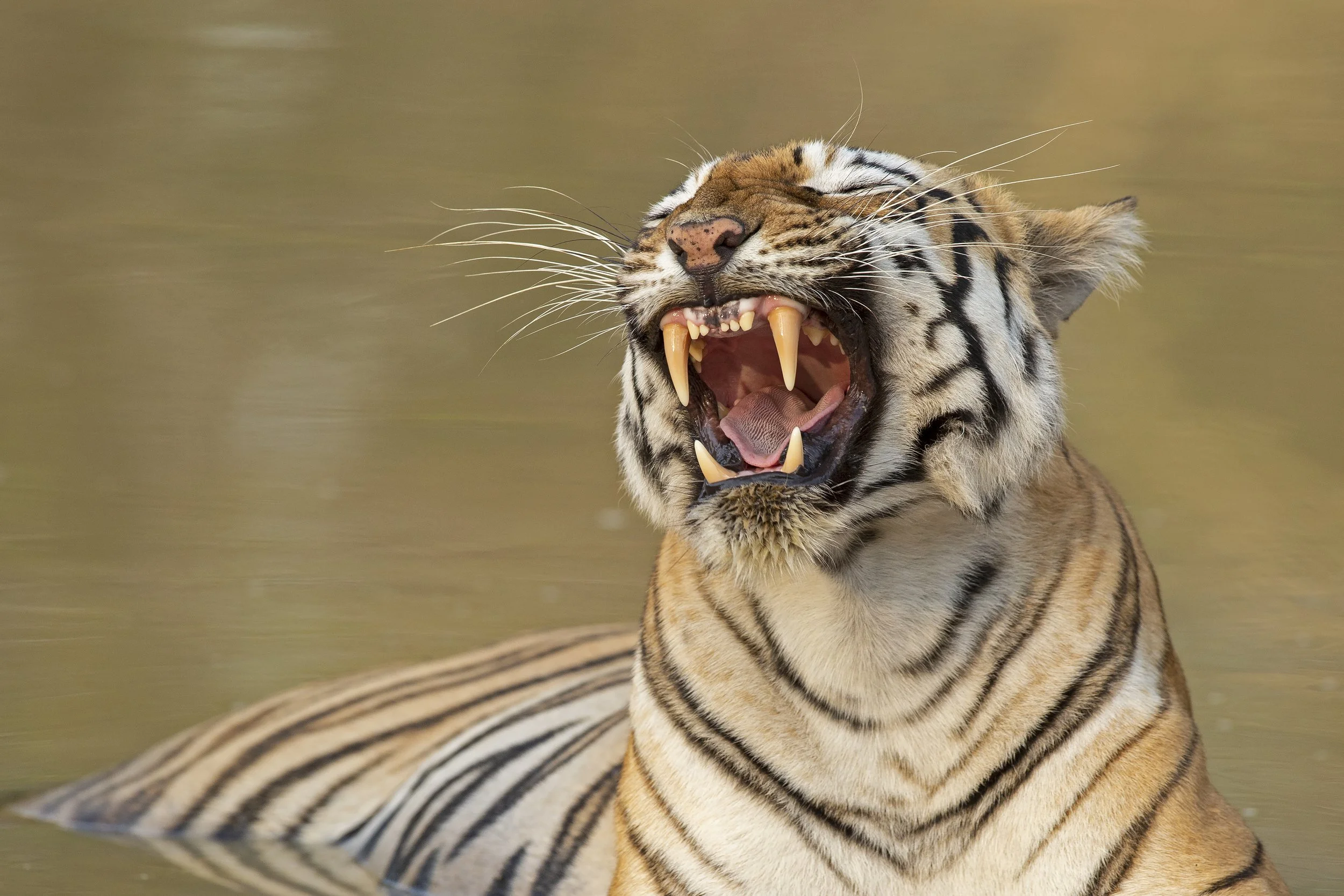
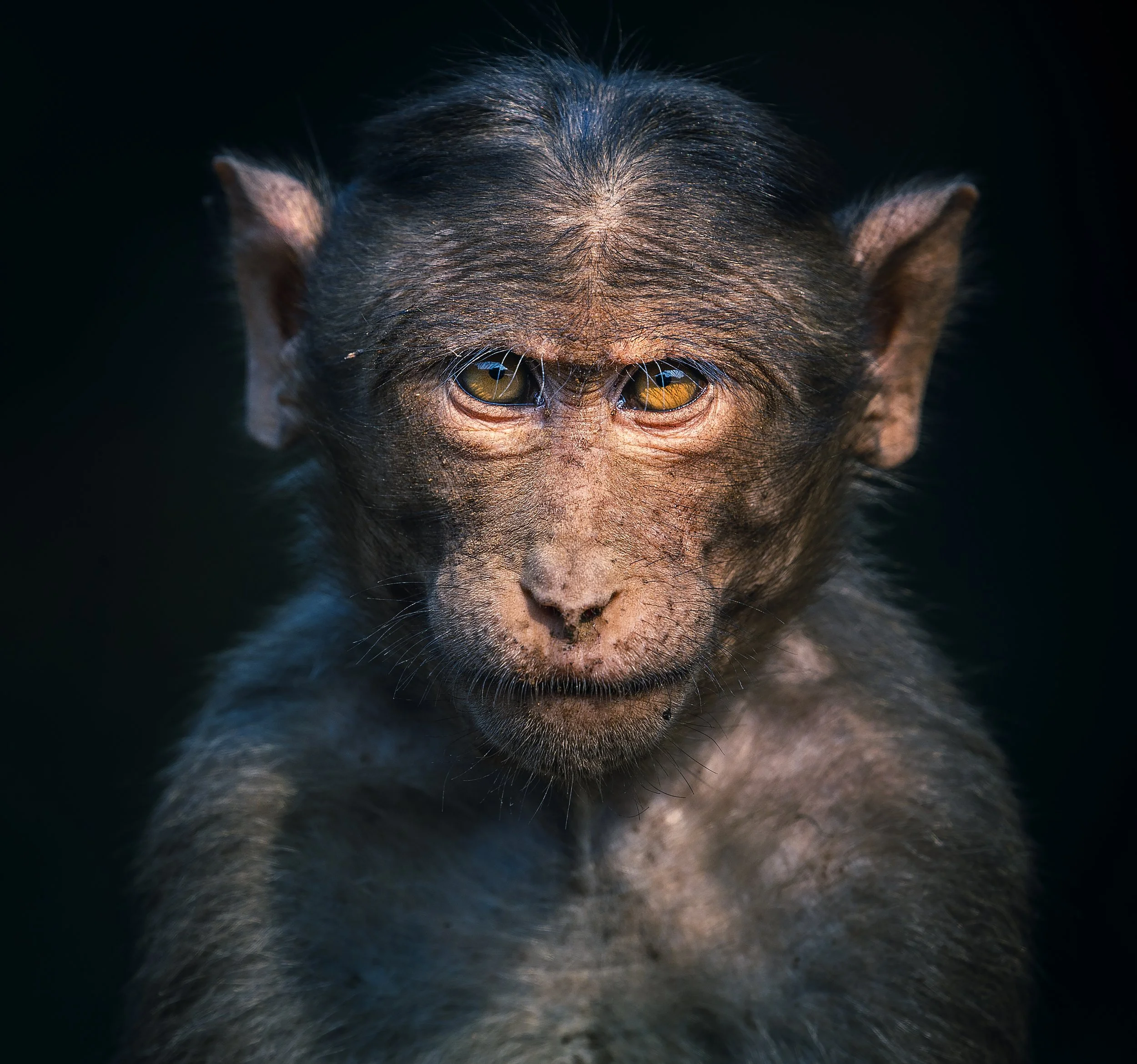
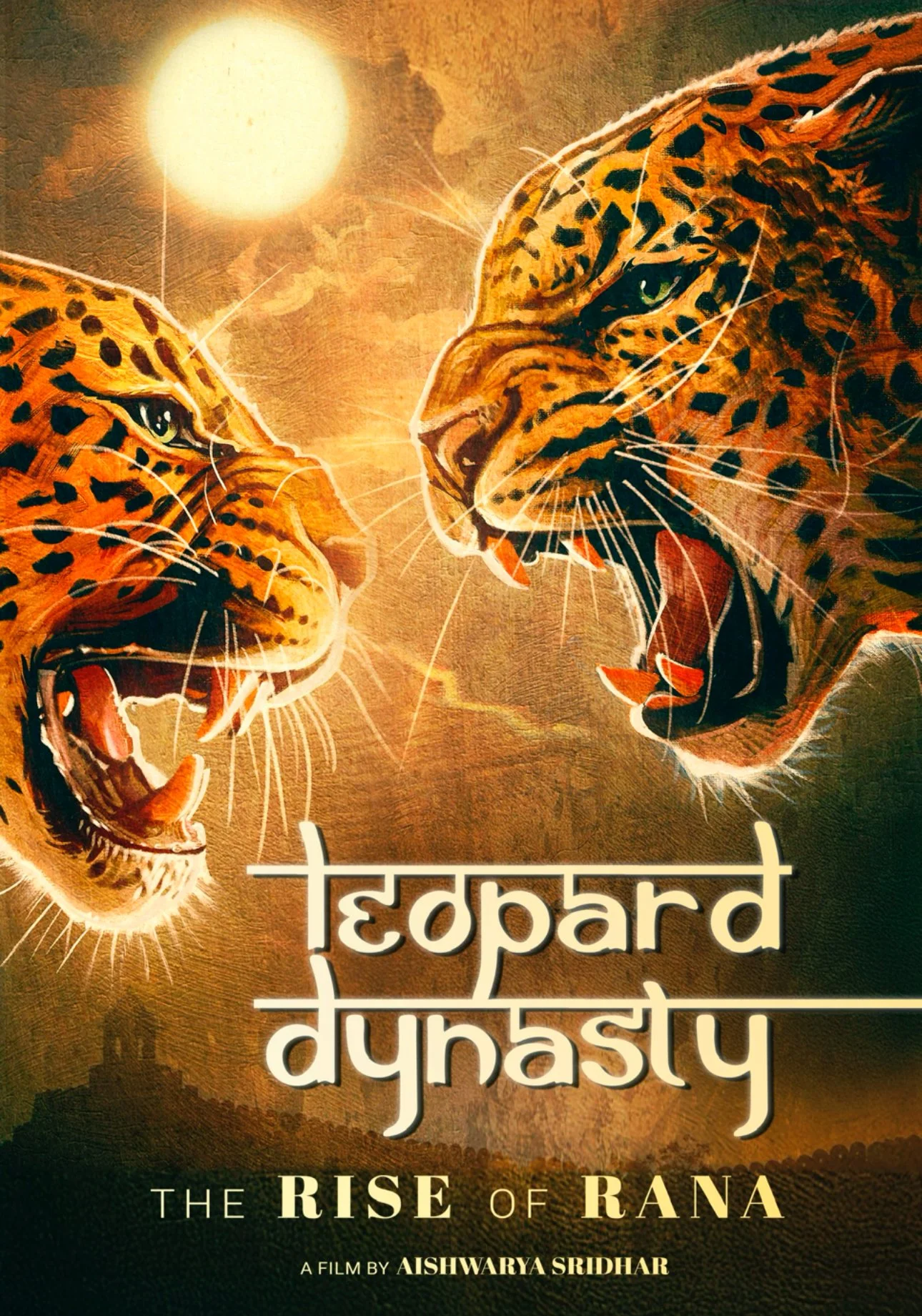



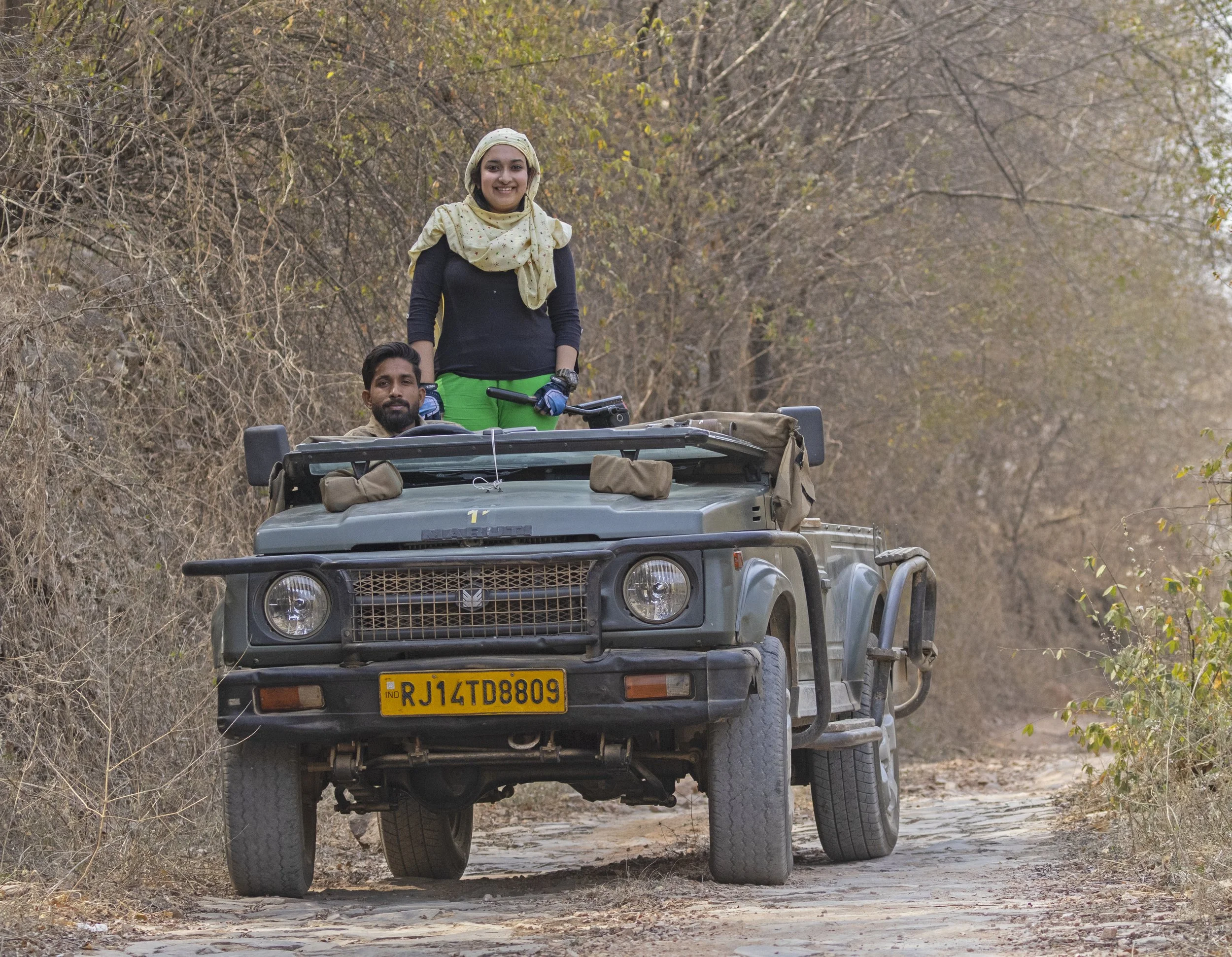







Masai Mara NR, Kenya 2014
This is one of my favourite leopard images taken whilst staying at Kicheche Mara North camp as majestic leopard Nalangu tenderly carried her tiny cub through a lush expanse of grass. This was the only time I have witnessed this behaviour in almost two decades traveling to Africa. You can imagine how thrilling it was!
The intricate patterns of the leopards fur, adorned with distinctive spots, create a captivating contrast against the vibrant greens of their natural habitat. Nalangu’s watchful gaze reflects a deep bond and protective instinct, while the cubs curious expression adds a touch of innocence and affection. This piece beautifully conveys the essence of nature's nurturing relationships, making it a perfect addition to any space that celebrates wildlife and the beauty of maternal love.
Available in open edition print runs
For more details on printing, delivery and charity, click here.